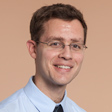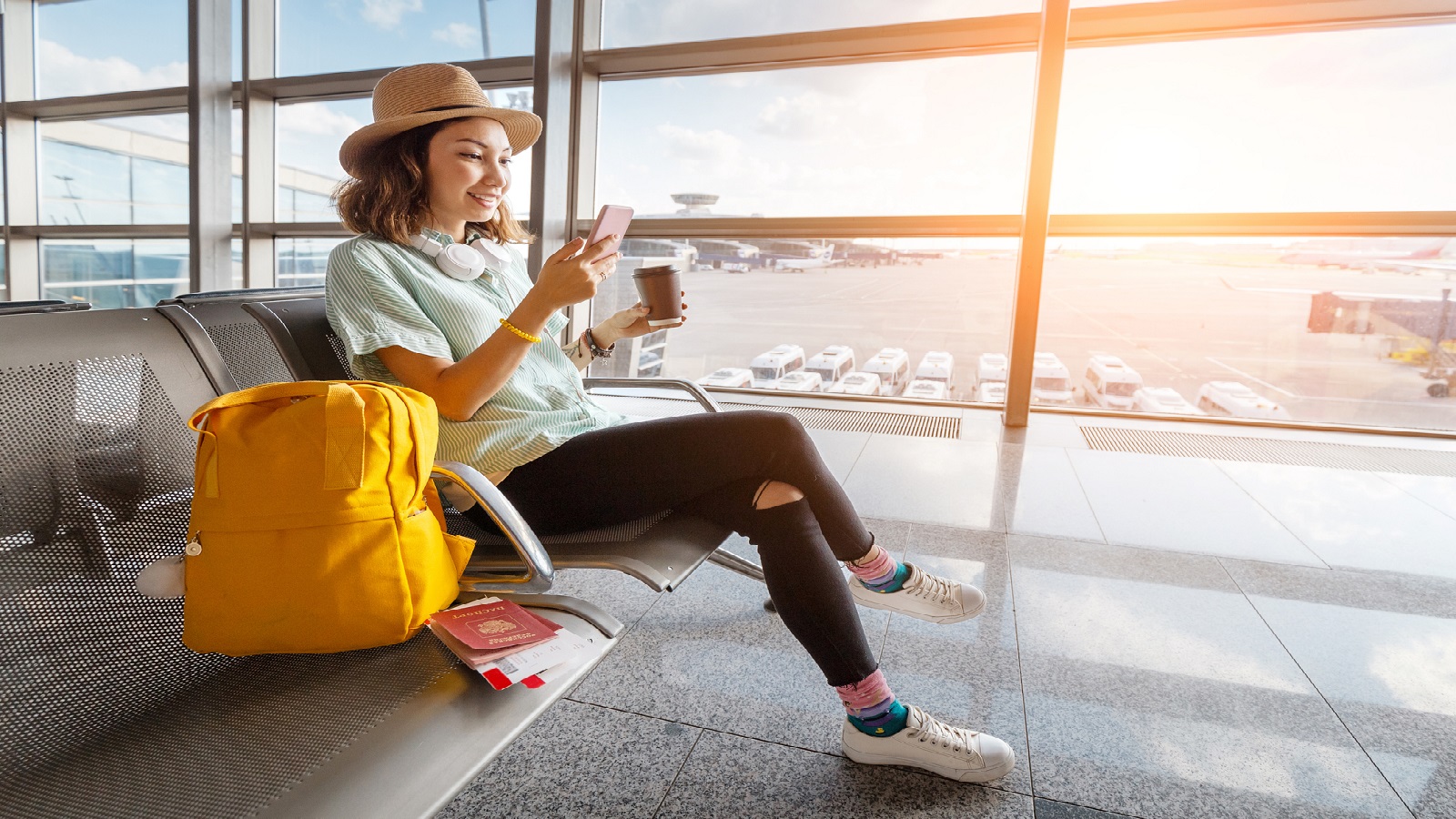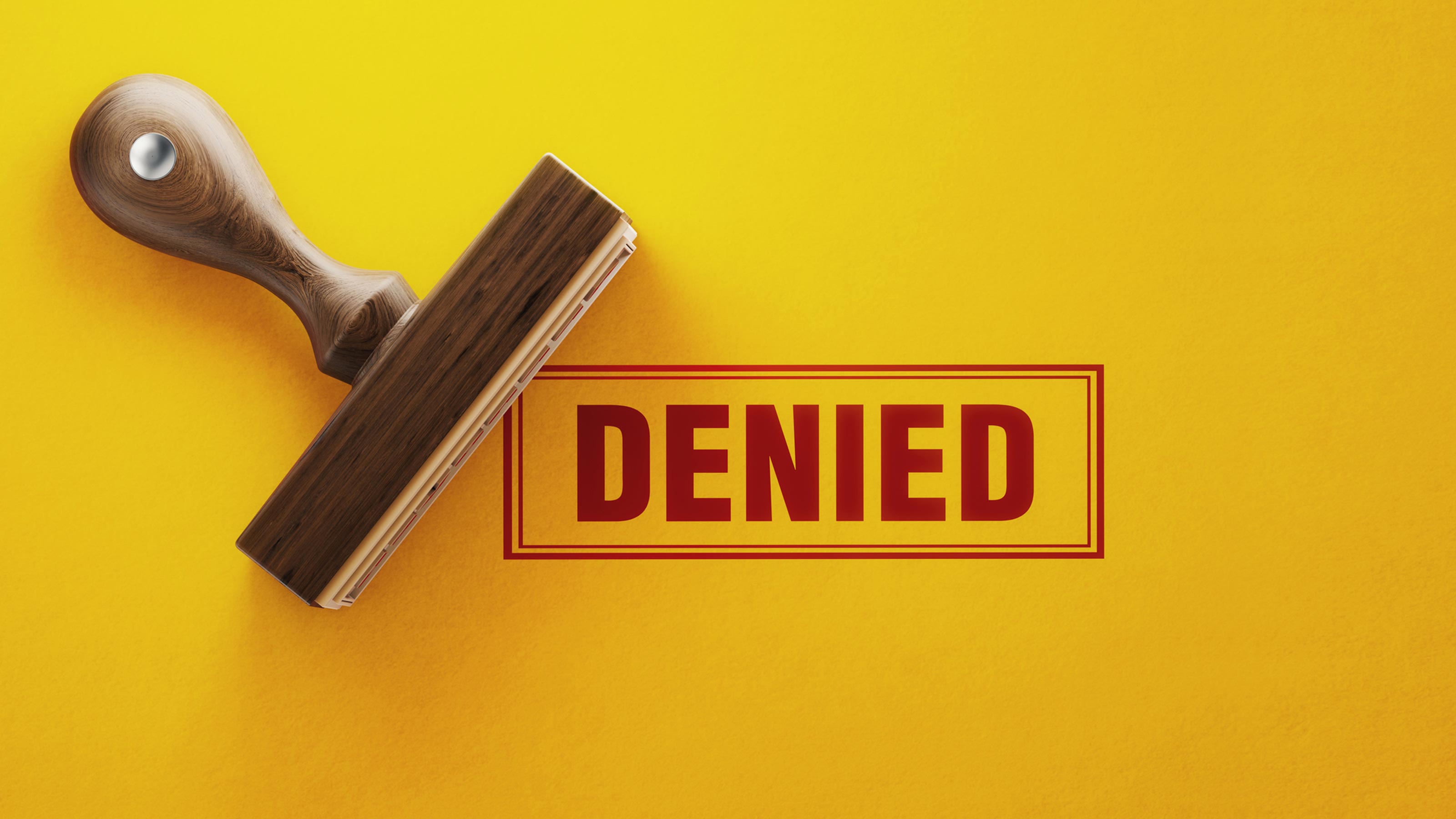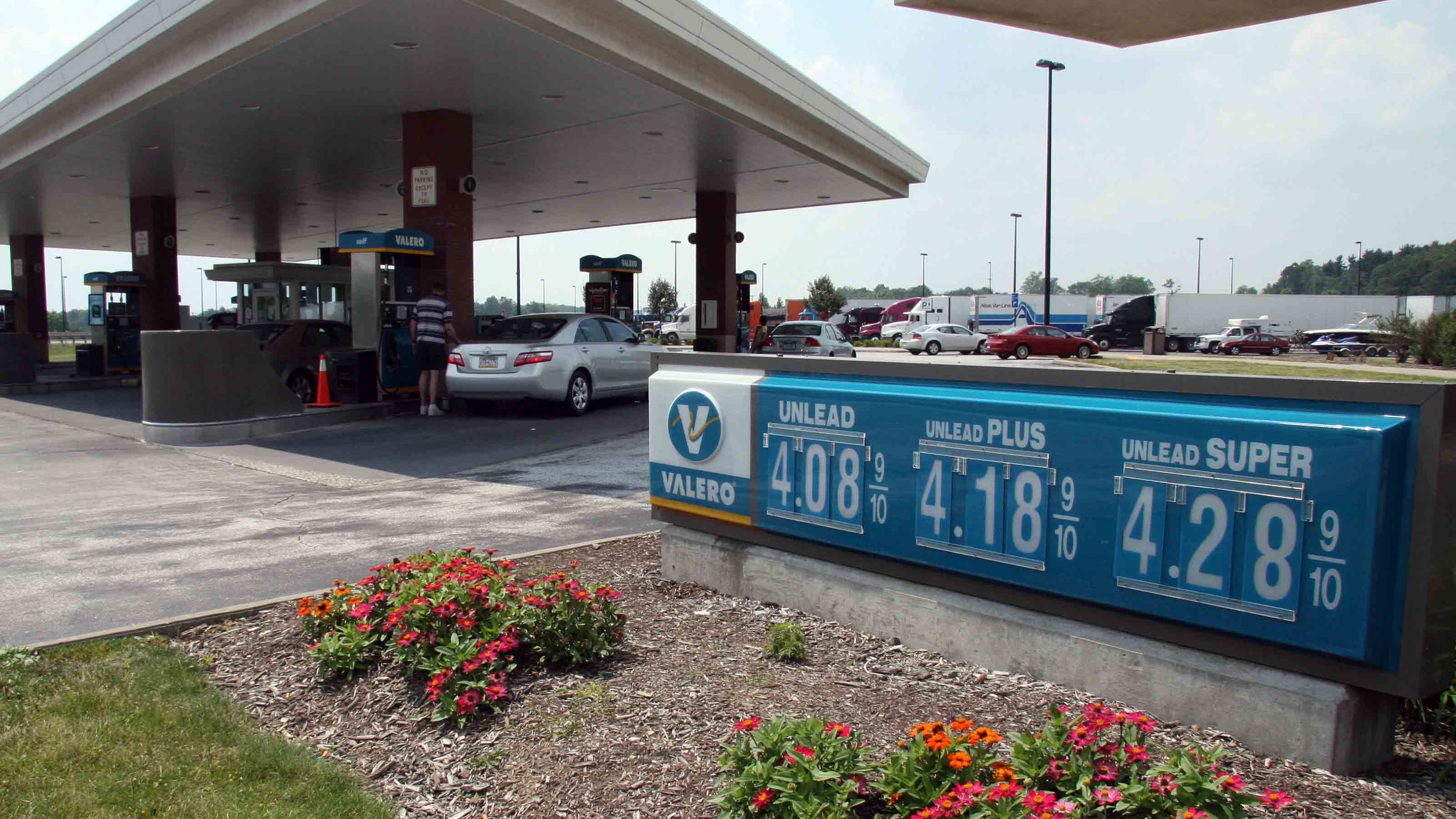Why Are Gas Prices Still Going Up?
The cost of a gallon of gas is at an all-time high. What’s driving the surge and will gas prices go down anytime soon?


Drivers in 2022 face an increasingly painful experience every time they fill up their gas tanks. National-average regular unleaded gas prices sit at $5.01 per gallon as of this writing – up 3.1% from $4.87 just a week ago, up 53% from $3.28 at the start of the year and 63% higher than the $3.04 national average a year ago.
Why are gas prices rising so much? And when will gas prices go back down again?
Let’s explore some of the drivers behind higher gas prices, then delve into whether there’s any relief in store for consumers at the pump.

Sign up for Kiplinger’s Free E-Newsletters
Profit and prosper with the best of expert advice on investing, taxes, retirement, personal finance and more - straight to your e-mail.
Profit and prosper with the best of expert advice - straight to your e-mail.
COVID Crushed Oil Demand … Then Crushed Oil Production
No single person, company or even government controls gas prices. Instead, there are several reasons why Americans are facing increasing pain when they fill up their vehicles.
First, blame the COVID-19 pandemic, which threw oil markets severely out of whack two years ago. They still haven’t fully recovered from the damage the virus inflicted.
When COVID first hit, it put a deep dent in global oil demand as many normal activities shut down and millions of people who usually drive to work stayed home. As a result, crude oil prices plunged. In fact, at one point in April 2020, benchmark West Texas Intermediate crude prices actually fell below $0 – something that would normally seem impossible.
With oil demand so weak due to COVID-19 restrictions, places to store unwanted crude filled up, and traders in oil futures scrambled to unload their positions in crude. Eventually, some had to pay buyers to take future oil deliveries off their hands.
Negative prices didn’t last long, but oil stayed very cheap for much of 2020. That led energy companies and major oil exporting countries in OPEC to slash their production because no one wanted to give away barrels of oil at such rock-bottom prices.
Since then, the world has slowly gotten through the pandemic, and oil demand has come roaring back, especially in the U.S. Unsurprisingly, consumers who missed out on travel and other normal activities in 2020 and 2021 are making up for lost time now. U.S. oil demand is about back to where it was pre-COVID. But oil production takes a lot longer to restart than oil consumption.
Idled wells can’t be easily restarted. Drilling new wells takes time. And oil producers have been cautious about opening the taps quickly, lest a new price drop burn them again. Here in the U.S., oil output has only partially recovered from its 2020 drop. OPEC and its partner nations are only gradually restoring the exports they took off the market during the worst of the pandemic.
But that’s not the only reason gas prices are going up.
War in Ukraine Threatens Russian Oil Exports
That mismatch between supply and demand helped push oil higher throughout 2021. Then they got another major boost early in 2022, when Russia invaded Ukraine.
Among oil-producing nations, Russia ranks behind only the U.S. and Saudi Arabia, supplying roughly 10% of the world’s oil needs. Western sanctions have cut off some of that supply, more sanctions targeting Moscow’s oil sales may be coming, and many western energy companies are voluntarily shunning Russian oil.
All this has sent crude oil prices to around $120 per barrel, which in turn pushed the average price of regular gas well above $5 per gallon this spring.
U.S. Trying to Move Away From Oil
Then there are the political factors that have contributed to higher gas prices.
President Joe Biden came into office vowing to transition the U.S. economy away from fossil fuels, with a goal of halving emissions from energy use by 2030 and making the U.S. carbon-neutral by 2050. The administration has continued to approve permits to drill for oil on federal lands – angering many environmentalists – but it has also tried to cut back on where energy companies can drill for oil in the future.
Plus, it famously nixed the disputed Keystone XL pipeline, which would have carried more than 800,000 barrels per day of Canadian crude to U.S. refineries. That oil can still cross the border, but it’ll have to come by rail, which is more expensive than moving by pipeline.
In short, the administration has been less friendly to oil production and transport than its predecessor, at a time when markets are undersupplied. How much that adds to the price you pay at the pump is impossible to say, but it’s a factor.
Energy Companies Not Rushing to Drill
Even now, with prices soaring, energy companies are being cautious about ramping up their oil output. They’re slowly putting new rigs to work drilling more wells, which helps. But they’re also limiting how much they invest in new production so that they can reward their investors with bigger dividends and stock repurchases.
That’s good for stockholders. But it means less money going toward pumping more oil, which isn’t great for consumers.
Will Gas Prices Go Down Soon? Well …
Unfortunately, it doesn’t look like gas prices are going to head much lower anytime soon.
The war in Ukraine shows no sign of ending, global oil demand is straining available supply, and Wall Street wants publicly traded energy companies to grow their production slowly so that they can keep returning cash to shareholders.
Indeed, earlier this year, we said that "we could take a run at $5 per gallon for the national average." Now that that has happened, it looks like gas prices could peak somewhere around $5.25 to $5.50 per gallon this summer.
At this point, only an economic recession caused by the Federal Reserve’s coming interest rate hikes – which some economists are starting to warn about – would be able to really lower gas prices.
And that’s probably not how anyone wants to save money at the pump.
Get Kiplinger Today newsletter — free
Profit and prosper with the best of Kiplinger's advice on investing, taxes, retirement, personal finance and much more. Delivered daily. Enter your email in the box and click Sign Me Up.

Jim joined Kiplinger in December 2010, covering energy and commodities markets, autos, environment and sports business for The Kiplinger Letter. He is now the managing editor of The Kiplinger Letter and The Kiplinger Tax Letter. He also frequently appears on radio and podcasts to discuss the outlook for gasoline prices and new car technologies. Prior to joining Kiplinger, he covered federal grant funding and congressional appropriations for Thompson Publishing Group, writing for a range of print and online publications. He holds a BA in history from the University of Rochester.
-
 10 Major AI Companies You Should Know
10 Major AI Companies You Should KnowThese 10 AI companies are at the forefront of machine learning. Find out how they’re driving innovation and jostling to be the biggest players in the game.
By Tom Taulli Published
-
 How Baby Boomers and Gen Xers Are Redefining Retirement Living
How Baby Boomers and Gen Xers Are Redefining Retirement LivingBoth generations need to embrace change and leverage real estate as a dynamic asset in their retirement planning. Here's how financial advisers can help, too.
By David Conti, CPRC Published
-
 Gas Prices on the Rise Again: How Drivers Can Save
Gas Prices on the Rise Again: How Drivers Can SaveGas prices on the rise with biggest one-day increase since June 2022. Here's some tips to reduce your pain at the pump.
By Ben Demers Published
-
 Free COVID-19 Tests In Time For Holidays
Free COVID-19 Tests In Time For HolidaysFree COVID-19 rapid antigen tests can be delivered directly to your home.
By Vaishali Varu Last updated
-
 Financial Abuse Is on the Rise: What It Is and What to Do About It
Financial Abuse Is on the Rise: What It Is and What to Do About ItDomestic violence almost always includes financial abuse. Here’s help on identifying and understanding it and how to get help and leave in a safe way.
By Stacy Francis, CFP®, CDFA®, CES™ Published
-
 Answers to Frequently Asked Social Security Disability Questions
Answers to Frequently Asked Social Security Disability Questionspersonal finance Social Security Disability Insurance is there to help those who can’t work, but getting the benefits you need can be confusing and difficult. Read on for answers to some of the most common SSDI questions.
By Steven Perrigo, J.D. Published
-
 When Is Travel Insurance Worth It?
When Is Travel Insurance Worth It?travel insurance Know when you need travel insurance and when you can skip it.
By Emma Patch Last updated
-
 Despite Cancelled Flights and Short-Staffed Hotels, Americans Are (Sort of) Traveling Again
Despite Cancelled Flights and Short-Staffed Hotels, Americans Are (Sort of) Traveling AgainBusiness Travel Thanks to high gas prices, cancelled flights and labor shortages across the sector, the post-COVID travel recovery looks uneven.
By Sean Lengell Published
-
 3 Main Reasons Why the Government Denies Social Security Disability Benefits
3 Main Reasons Why the Government Denies Social Security Disability Benefitspersonal finance To help improve your chances at being approved for SSDI benefits, it helps to better understand why so many applicants get turned down.
By Steven Perrigo, J.D. Published
-
 Today's Pump Pain: Worse Than 2008 Gas Prices?
Today's Pump Pain: Worse Than 2008 Gas Prices?spending Americans haven't felt this much pain at the pump in well more than a decade, but by one measure, gas prices still haven't topped 2008's highs.
By Jim Patterson Published